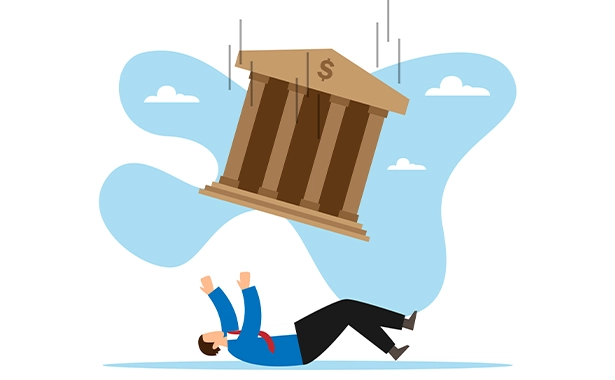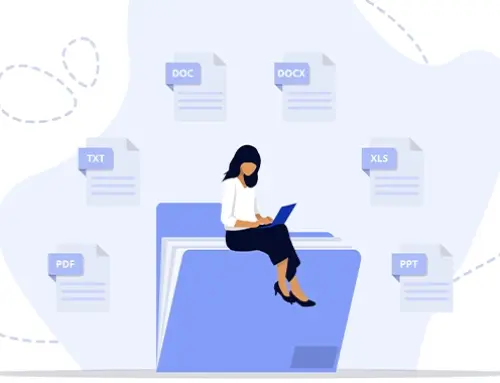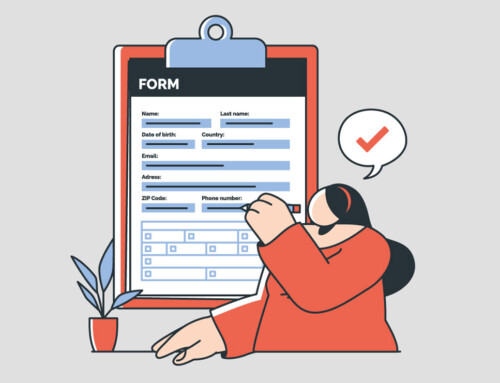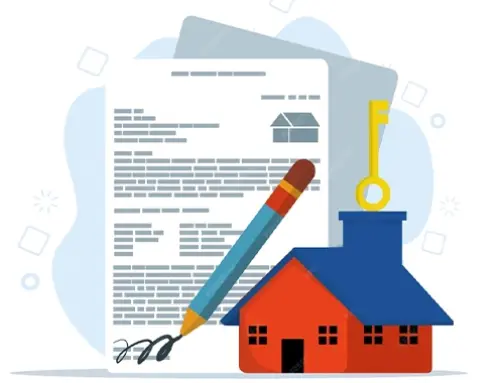Contents
Chapter 11 vs. Chapter 7 – Choose the Ultimate Path to Financial Freedom
When debt becomes unmanageable, bankruptcy law offers two main paths: Chapter 11 vs chapter 7. Understanding chapter 11 vs chapter 7 bankruptcy is essential for anyone considering these options. Chapter 7 bankruptcy involves liquidating non-exempt assets to pay creditors, with most remaining debts discharged. Chapter 11 bankruptcy allows debtors—usually businesses—to propose a plan to restructure and repay obligations over time, while continuing to run. Knowing the difference between chapter 11 vs chapter 7 can help decide the best approach for resolving financial distress.
1. Understanding Chapter 7 Bankruptcy
Overview of Chapter 7
Chapter 7 bankruptcy, often called “liquidation bankruptcy,” is designed for individuals or businesses that cannot repay their debts. In a Chapter 7 case, a court-appointed trustee gathers and sells the debtor’s non-exempt assets, then distributes the proceeds to creditors according to legal priority. The process provides a fresh start for honest individual debtors: once the liquidation is complete, the debtor receives a discharge of most remaining unsecured debts (with certain exceptions like recent taxes or support obligations). Chapter 7 bankruptcy is available to both consumers and companies. However, individual consumer debtors must pass a means test to file – if their income is too high (showing ability to repay), the case may be dismissed or converted. There are no debt limits in Chapter 7, and filing is straightforward. Businesses that file Chapter 7 typically cease operations entirely (the company is closed, and its management is dismissed). Chapter 7 is usually a faster process than other chapters, taking only a few months in most cases.
Process and Timeline
Filing Chapter 7 begins with a petition and needed financial schedule needed given to the bankruptcy court. An automatic stay at once goes into effect, halting most collection actions. Next, the U.S. Trustee appoints a Chapter 7 trustee to administer the case. The trustee reviews the debtor’s assets and exemptions, sells any non-exempt assets, and distributes the funds to creditors. In most consumer Chapter 7 cases, there are no non-exempt assets to liquidate (a “no-asset” case), so unsecured creditors receive nothing. The entire Chapter 7 process is quick – often about 4 to 6 months from filing to case closure. There is no repayment plan part in Chapter 7. Once the trustee finishes collecting and distributing any available assets, the court will issue a discharge order (for individual debtors), wiping out the remaining dischargeable debts. For business debtors, there is no discharge (since the business entity dissolves), but the result is similar – the business’s creditors are paid to the extent possible, and the company’s remaining debts are canceled when the entity shuts down.
Pros and Cons of Chapter 7
Chapter 7 is fast and decisive. Most cases conclude within a few months, and qualifying unsecured debts are completely wiped out, giving individual debtors a fresh start. It is also inexpensive compared to Chapter 11 (the filing fee is $338, and attorney fees for straightforward cases are low). However, the trade-off is that the debtor’s non-exempt assets may be sold to pay creditors – you might lose property that is not protected by exemptions. For businesses, Chapter 7 means shutting down operations entirely (no continuation of the enterprise). Chapter 7 bankruptcy also does not discharge certain obligations (like recent taxes, student loans, or child support), and it leaves a mark on the debtor’s credit report for up to ten years. Despite these drawbacks, Chapter 7 stays an attractive choice for debtors with little income or no practical way to repay their debts, because it provides quick relief and finality.
2. Understanding Chapter 11 Bankruptcy
Overview of Chapter 11
Chapter 11 bankruptcy is known as a “reorganization” bankruptcy. It allows a financially distressed business (or in some cases an individual) to restructure its debts and try to become profitable again while under court supervision. In a Chapter 11 case, the debtor usually remains “debtor in possession” (DIP) – meaning current management continues to run the business, but with oversight from the bankruptcy court and the U.S. Trustee (no Chapter 11 trustee is appointed unless the court orders one for cause). The debtor in possession proposes a plan of reorganization that outlines how each class of creditors will be treated – for example, secured lenders might get new payment terms, unsecured creditors might receive a percentage of their claims, etc. The goal is to appear from Chapter 11 as a leaner business with a sustainable debt load. While Chapter 11 is primarily used by corporations and larger businesses, individuals can file Chapter 11 as well (notably, if their debts exceed the limits for Chapter 13 or they have substantial assets/income to protect). In fact, the Supreme Court has confirmed that an individual debtor not engaged in business is eligible for Chapter 11 relief. In practice, however, most Chapter 11 cases are business cases – individuals rarely use this chapter unless they have exceptionally large debts.
How Chapter 11 Works (Process and Timeline)
Chapter 11 case laws begin with the filing of a bankruptcy petition (usually by the debtor). The same automatic stay arises to stop creditor actions. The debtor stays in control of assets and operations as DIP but must follow certain requirements. For instance, the debtor in possession must keep records, file monthly operating reports, and pay quarterly U.S. Trustee fees. The debtor has an exclusive period to propose a plan of reorganization, during which it negotiates with creditors to formulate a repayment plan. Creditors (and sometimes equity holders) then get to vote on the proposed plan. To be confirmed, the plan needs approval by most creditors (by dollar amount and number) in each voting class and the court’s confirmation. If the plan is confirmed by the court, the debtor appears from Chapter 11 and continues business under the plan’s terms. From start to finish, Chapter 11 cases typically take 1 to 2 years – or longer for complex cases – to reach confirmation. (Pre-packaged Chapter 11 cases, where the plan is negotiated before filing, can be much faster.) If a Chapter 11 plan cannot be confirmed, the case may be converted to Chapter 7 liquidation or dismissed.
Pros and Cons of Chapter 11
The primary advantage of Chapter 11 is that it gives a struggling business a chance to rehabilitate instead of shutting down. The debtor stays in possession and keeps control over daily operations, which means the company can continue generating revenue during the bankruptcy case. Debts can be restructured – for example, maturities extended, interest rates reduced, some debt forgiven – which can make the difference between a company’s survival or failure. Chapter 11 also allows for asset sales free of liens and the ability to reject burdensome contracts or leases (with court approval), providing tools to shed liabilities that Chapter 7 cannot offer. For individuals, Chapter 11 can be a way to reorganize complex finances or debt that exceeds Chapter 13 limits, potentially allowing them to keep valuable assets by paying creditors over time. However, Chapter 11 is far more expensive and complex than Chapter 7. It requires significant professional fees and careful planning to propose a confirmable plan – the legal and administrative costs can be prohibitive for small debtors. The case itself demands time and attention from management (for businesses) to meet reporting duties and negotiate with creditors. Moreover, there is no guarantee of success: many Chapter 11 cases do not result in a confirmed plan. If the business’s finances continue to deteriorate or no practical plan can gain support, Chapter 11 will end in liquidation or dismissal, leaving the debtor back at square one (after having spent considerable time and money). In short, Chapter 11 offers a potential lifeline for a practical business or individual with the means to reorganize, but it comes with greater cost and risk. It is suitable only when the debtor can realistically turn things around through restructuring.
Eligibility and Filing Requirements
- Who can file: Both Chapter 7 and Chapter 11 are available to individuals, partnerships, corporations, and other business entities. (Certain types of entities – like banks and insurance companies – cannot file under Chapter 7, and stockbrokers cannot file under Chapter 11 – but these exceptions rarely apply to typical law firm clients.) In general, any person or company in financial distress may file Chapter 7 if eligible, or Chapter 11.
- Practical eligibility differs, though: to use Chapter 7, individual debtors must satisfy the means test (showing their income is low enough to qualify). Chapter 11 vs chapter 7 has no means evaluation and no strict debt limits (unlike Chapter 13’s debt caps), so even exceptionally large or affluent debtors can file Chapter 11 if needed.
- Another key difference is procedural: The debtor (for an individual consumer) initiates chapter 7 only voluntarily, while Chapter 11 cases can sometimes be started by creditors (via an involuntary petition) in business contexts. However, involuntary bankruptcies are uncommon and require a debtor with multiple creditors and unmistakable evidence of default.
Control of Assets and Operations
In Chapter 7, the trustee assumes control of the debtor’s assets as soon as the case is filed. The debtor’s management loses authority to make decisions about the estate’s property, and any operating business is effectively ended. The trustee liquidates the assets and distributes the proceeds. In Chapter 11, by contrast, the debtor usually keeps control and continues running as the debtor in possession. There is no Chapter 11 trustee in most cases, so existing management stays at the helm (although major business decisions – like asset sales, financing, or ending large contracts – require bankruptcy court approval). Chapter 7 means the owners/directors hand over the keys to the business, and it shuts down, while Chapter 11 allows the owners to remain in charge and try to revive the company. (If there is serious fraud or mismanagement, the court can appoint a Chapter 11 trustee to take over, but that is the exception, not the norm.)
Cost and Administrative Burden
Filing under Chapter 7 vs Chapter 11 entails dramatically different costs. Chapter 7 is inexpensive, the court filing fee is $338, and attorney fees for straightforward cases are modest compared to Chapter 11. There are no ongoing fees during the case – the process is simple and short, minimizing administrative expenses. By contrast, Chapter 11 is far more costly. The filing fee alone is $1,738, and the debtor must pay quarterly U.S. Trustee fees (which can range from $325 to $30,000 per quarter, depending on the debtor’s disbursements). Chapter 11 cases also involve extensive legal and professional work over many months – it is not unusual for even a small business Chapter 11 to incur tens of thousands of dollars in fees and expenses. These expenses make Chapter 11 impractical for some debtors. Subchapter V of Chapter 11 (created in 2019) was specifically designed to reduce costs for eligible small businesses by streamlining the process (for example, no creditors’ committee and simpler plan rules). Still, any Chapter 11 will be more expensive than Chapter 7, so the debtor must have the financial ability and potential benefit to justify a reorganization effort.
Success Rates and Outcomes
The expected outcomes under Chapter 7 vs Chapter 11 are quite different. In Chapter 7, the outcome is straightforward: the debtor’s non-exempt assets (if any) are liquidated, and the debtor (if an individual) receives a discharge of unpaid eligible debts. Most Chapter 7 cases result in a full discharge for individual debtors. Chapter 11, on the other hand, has a less certain outcome. Many Chapter 11 debtors do not achieve a confirmed plan of reorganization. Historical data from the U.S. Trustee Program found that only about 25% of Chapter 11 cases result in a confirmed plan. The rest end up either converted to Chapter 7 liquidation or dismissed (ended without a plan). This means a Chapter 11 filing carries a significant risk that the debtor will not successfully reorganize. On the positive side, if a Chapter 11 plan is confirmed, the business can appear and continue running, and creditors will be paid as outlined in the plan (often receiving more than they would have in a Chapter 7 liquidation). Chapter 11 also allows creative resolutions – for example, debts can be restructured or reduced in ways not possible in Chapter 7. Ultimately, Chapter 7 guarantees a definite end (and usually a quick discharge for individuals), while Chapter 11 offers the possibility of saving a business or reorganizing finances – with no absolute assurance of success.
4. Choosing Between Chapter 7 vs Chapter 11
The first consideration is whether the enterprise can realistically be saved. If a company is insolvent and consistently losing money with no realistic turnaround, Chapter 7 is usually the better choice – it stops the bleeding, liquidates remaining assets, and allows all parties move on. On the other hand, if the business still has a practical core (or an individual debtor has steady income) and could return to stability with debt relief, then Chapter 11 offers a chance to reorganize and continue running rather than shutting down.
Final Verdict: Chapter 11 vs Chapter 7
Choosing between Chapter 7 and Chapter 11 bankruptcy is a critical decision with quite different consequences. Chapter 7 offers a swift, definitive end to the case – it liquidates assets and wipes out debts, but at the cost of closing the business (for companies) and forfeiting non-exempt property. Chapter 11, by contrast, offers an opportunity to restructure and potentially save a practical business, although it is a longer, more expensive process with no guarantee of success. The choice hinges on the debtor’s financial situation and goals: if there’s truly no practical path to recovery, Chapter 7 maximizes creditor recovery and allows the debtor to move on. If the business or individual can reorganize and a plan to regain stability, Chapter 11 can preserve value and keep operations alive.
For attorneys, understanding these key differences means offering better guidance to clients. By carefully evaluating each client’s situation – considering their financial health, assets, and prospects – you can recommend the best path and avoid wasted effort on a misaligned strategy. Aligning the bankruptcy chapter with the client’s needs improves the likelihood of a successful outcome.
Handling bankruptcy cases – from tracking filing deadlines to managing client documents – can be challenging for any law firm. RunSensible empowers your firm with an all-in-one legal practice management solution that makes managing Chapter 7 and Chapter 11 cases more efficient. With RunSensible, you can automate case tracking, set reminders for key bankruptcy dates (like creditor meetings or plan filing deadlines), securely store and share documents, and keep all client communications in one place.
FAQs
1. Can an individual file for Chapter 11 instead of Chapter 7 bankruptcy?
Yes – although Chapter 11 is usually used by businesses, individuals can and sometimes do file Chapter 11. In practice, an individual might choose Chapter 11 over Chapter 7 only in special situations. For example, if they have large debts (exceeding Chapter 13 limits) or significant non-exempt assets they want to protect, Chapter 11 can be a way to reorganize and pay overtime. However, Chapter 11 is far more complex and expensive than Chapter 7.
2. Will a business owner lose control of their company in Chapter 7 vs Chapter 11?
In Chapter 7, yes. When a business files Chapter 7, a trustee is appointed, and the owners and managers effectively lose all control – the company stops running and the trustee sells off the assets. In Chapter 11, by contrast, the business owners stay “in possession” and continue running day-to-day operations as the debtor in possession (DIP). There is no trustee in most Chapter 11 cases, so management stays in control (though major decisions are subject to court approval).
3. How long does Chapter 11 vs Chapter 7 bankruptcy take?
A Chapter 7 bankruptcy is quick – typically around 4 to 6 months for most consumer cases from start to finish. Business Chapter 7 cases that involve liquidating assets might take a bit longer, but generally the process is measured in months, not years. Chapter 11, on the other hand, takes much longer. A simple Chapter 11 case can often be completed in 6–12 months, but many Chapter 11 cases last 1 to 2 years (or more) before a plan is confirmed.
4. What is Subchapter V and how does it relate to Chapter 11 vs Chapter 7?
Subchapter V is a special provision added to Chapter 11 (by the 2019 Small Business Reorganization Act) to help small businesses reorganize more easily. It creates a streamlined, cheaper version of Chapter 11 for “small business debtors” (those under a certain debt threshold). In Subchapter V, there’s no creditors’ committee, certain procedures are simplified, and a trustee is appointed to ease (while the debtor usually stays in control).
5. Can a Chapter 11 case be converted to Chapter 7 (and vice versa)?
Yes. Bankruptcy law allows conversion between Chapter 11 and Chapter 7 in many circumstances. A debtor in Chapter 11 can file a motion to convert the case to Chapter 7 if reorganization is not working out (or if they decide liquidation is in the best interest). Similarly, a Chapter 7 case can be converted to Chapter 11 if the debtor later finds a way to fund a reorganization plan – though this scenario is less common.
Sources
https://www.justice.gov/ust/bankruptcy-fact-sheets/overview-bankruptcy-chapters
https://www.uscourts.gov/court-programs/bankruptcy/bankruptcy-basics/chapter-11-bankruptcy-basics
https://www.njb.uscourts.gov/court-info/court-fees
https://www.justice.gov/archive/ust/articles/docs/abi98febnumbers.pdf
https://flpllp.com/chapter-7-vs-chapter-11-bankruptcy/
https://www.bradford-law.com/blog/what-happens-when-you-file-bankruptcy-as-a-business/
Disclaimer: The content provided on this blog is for informational purposes only and does not constitute legal, financial, or professional advice.






